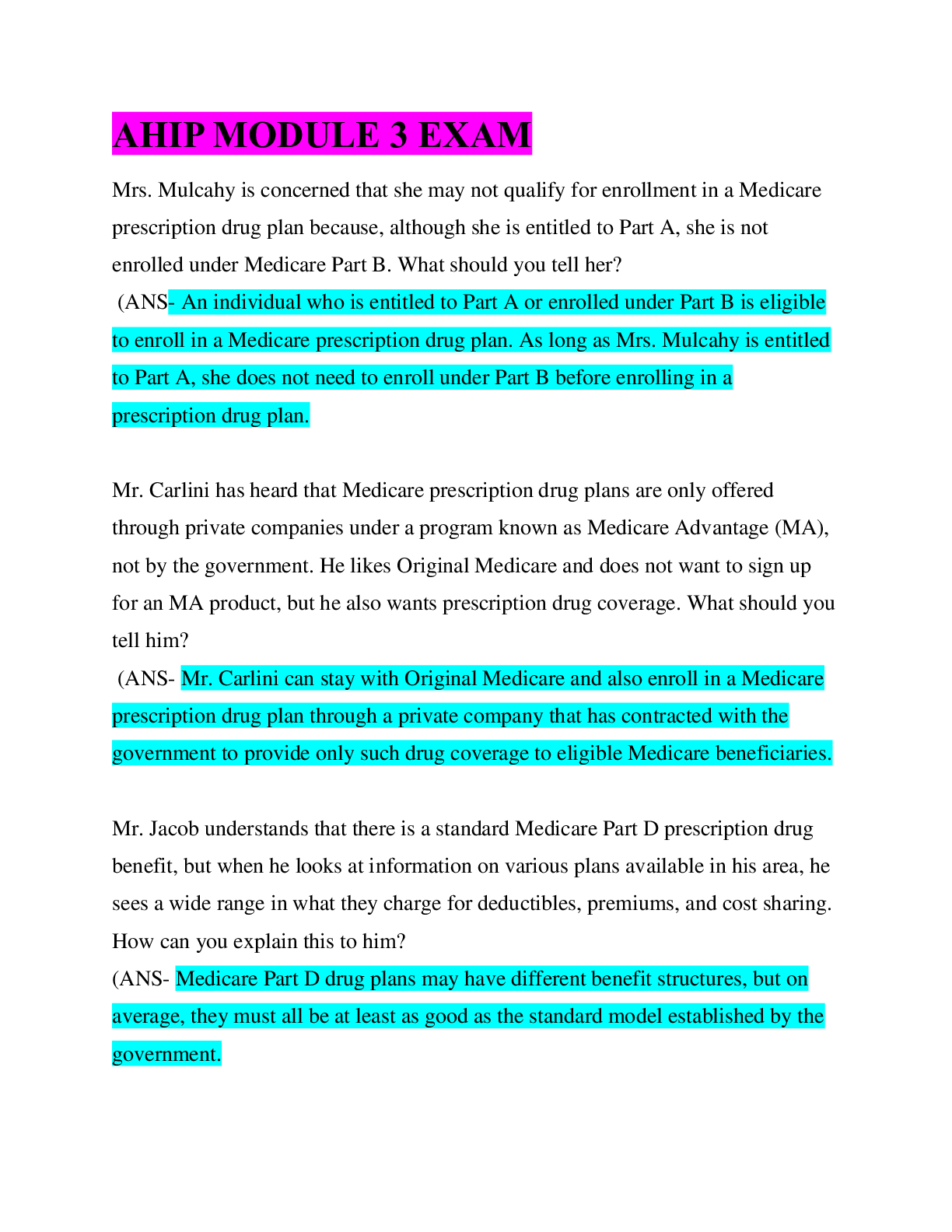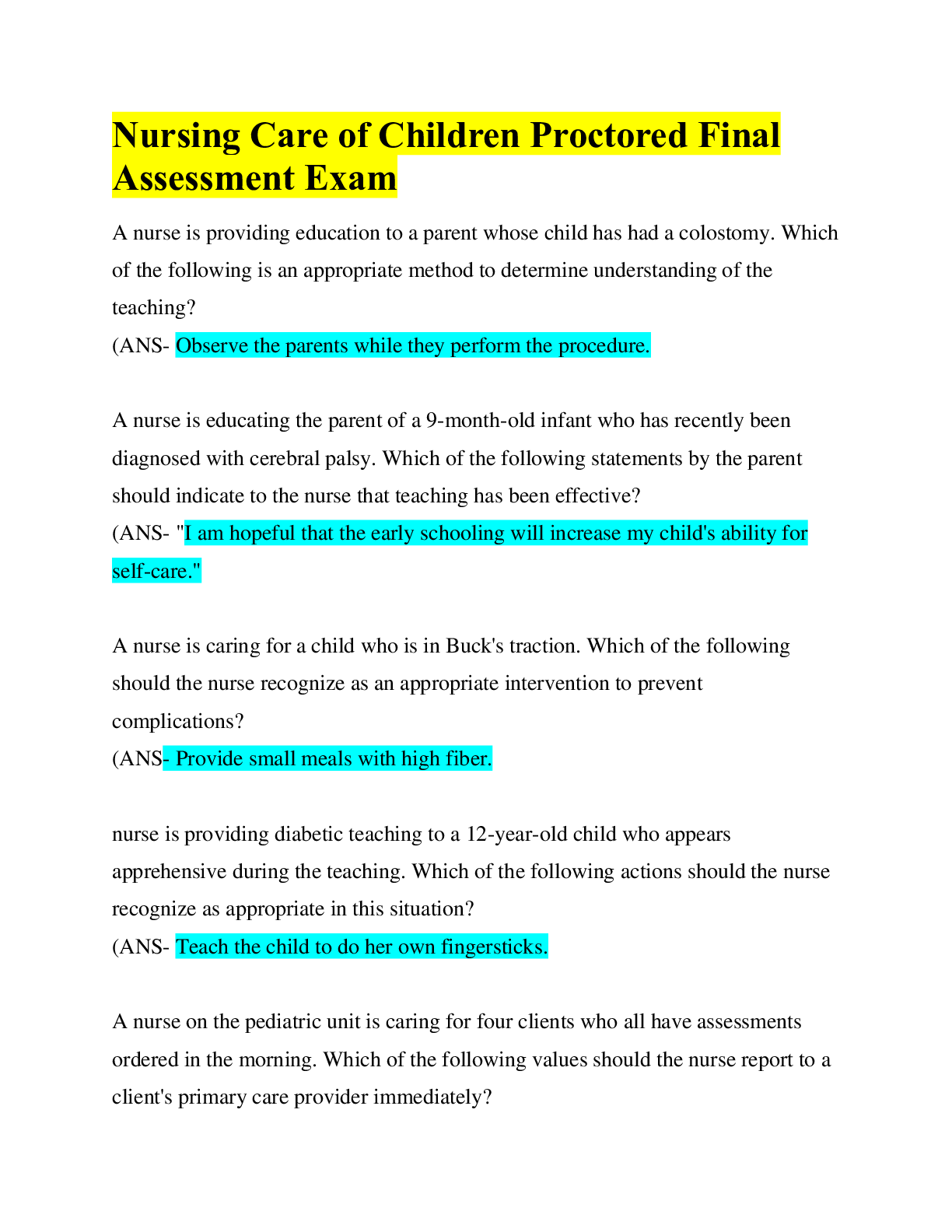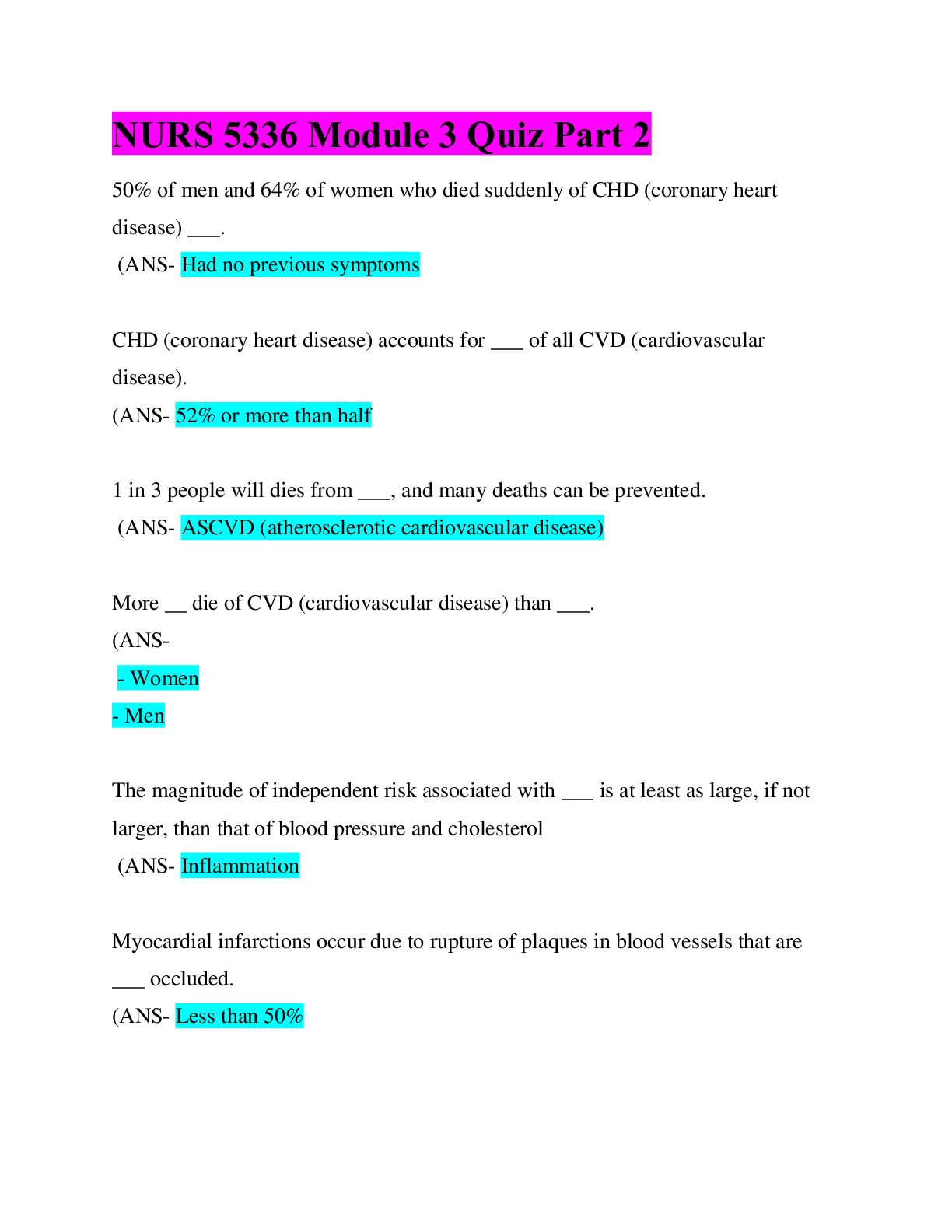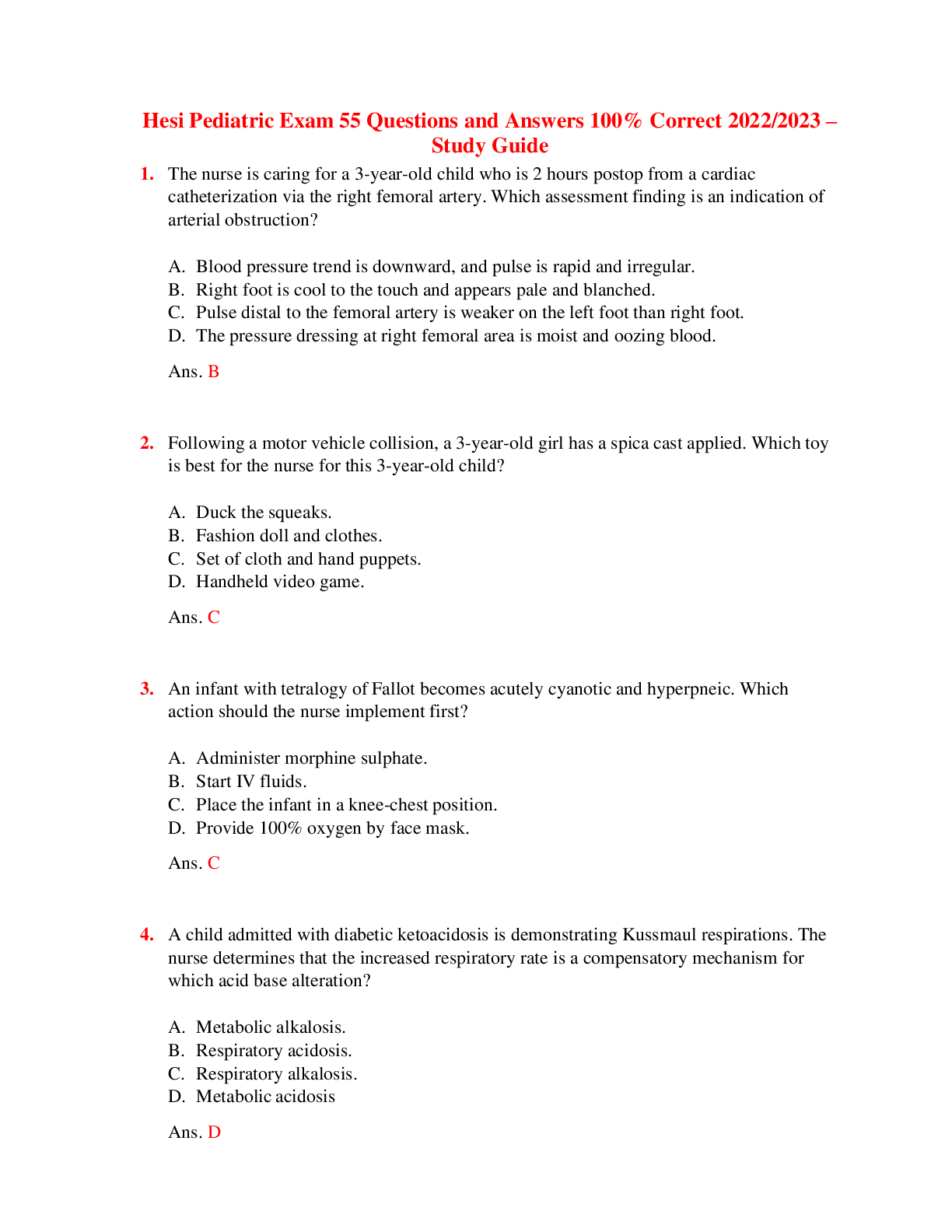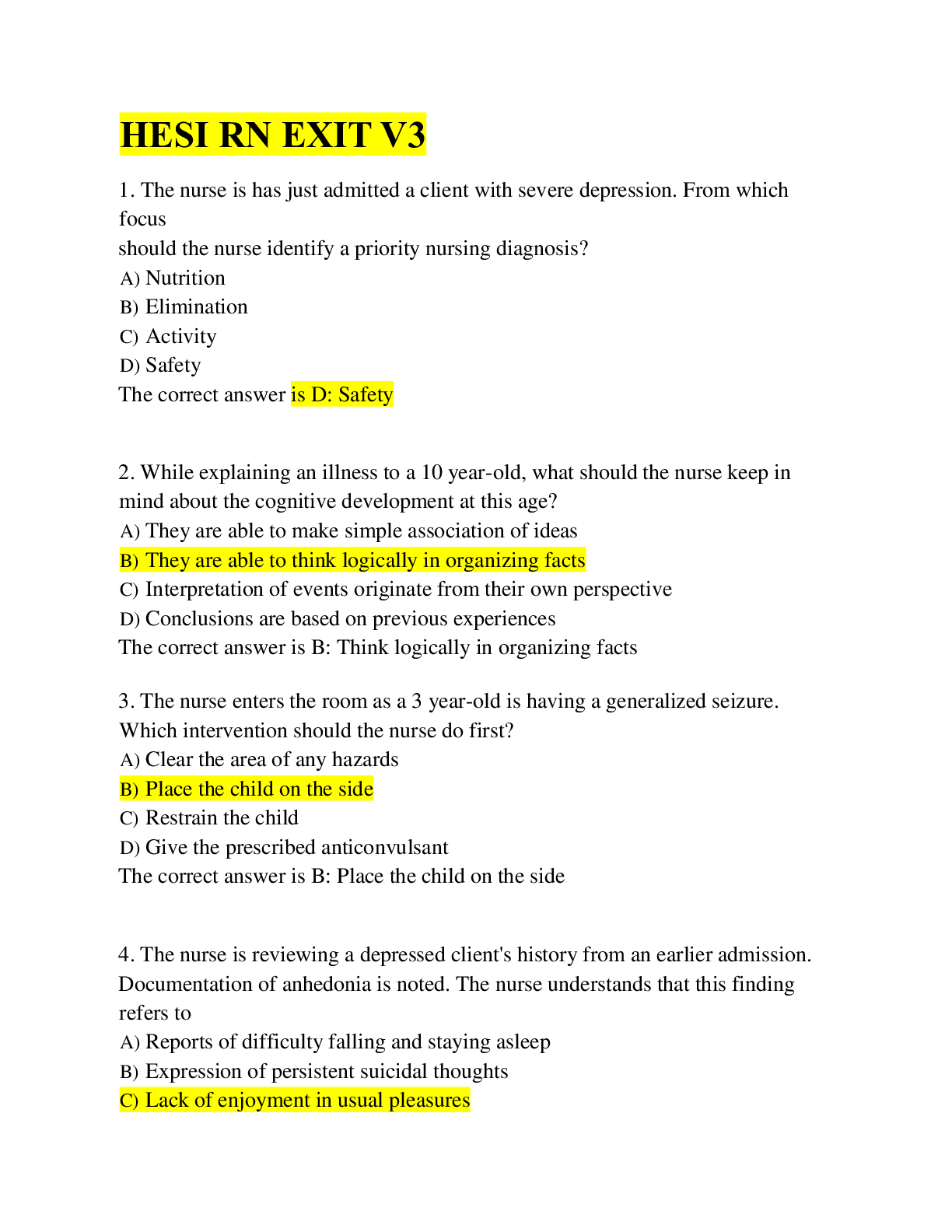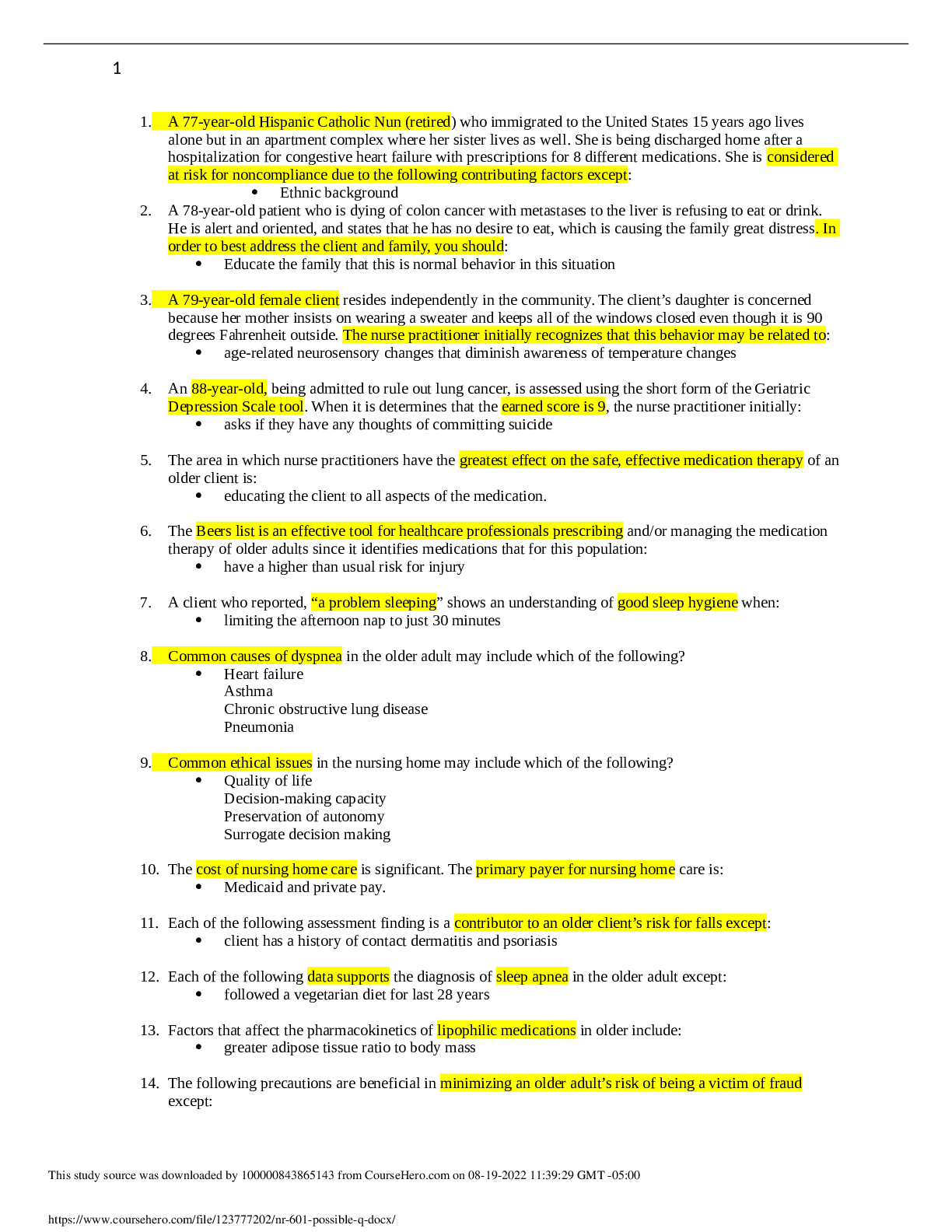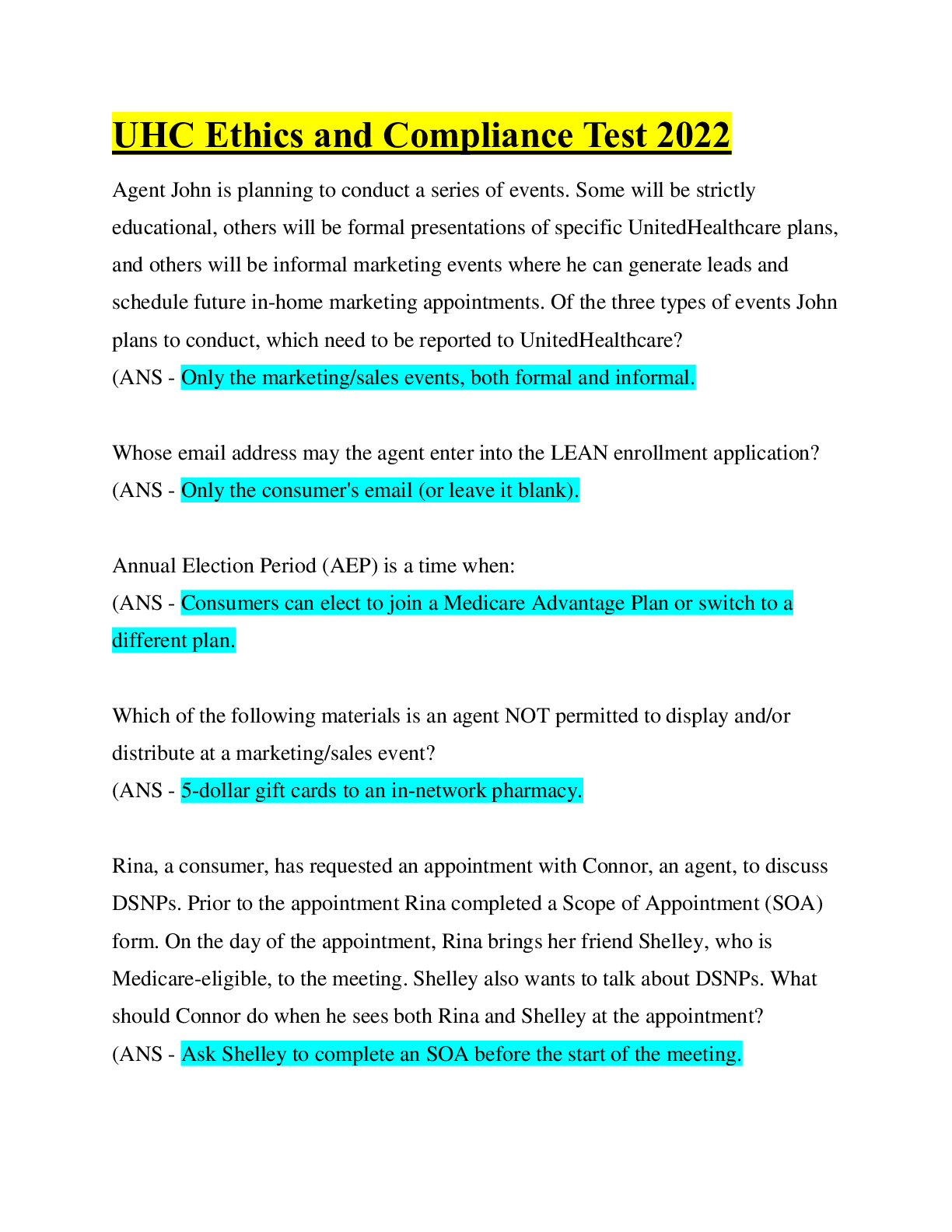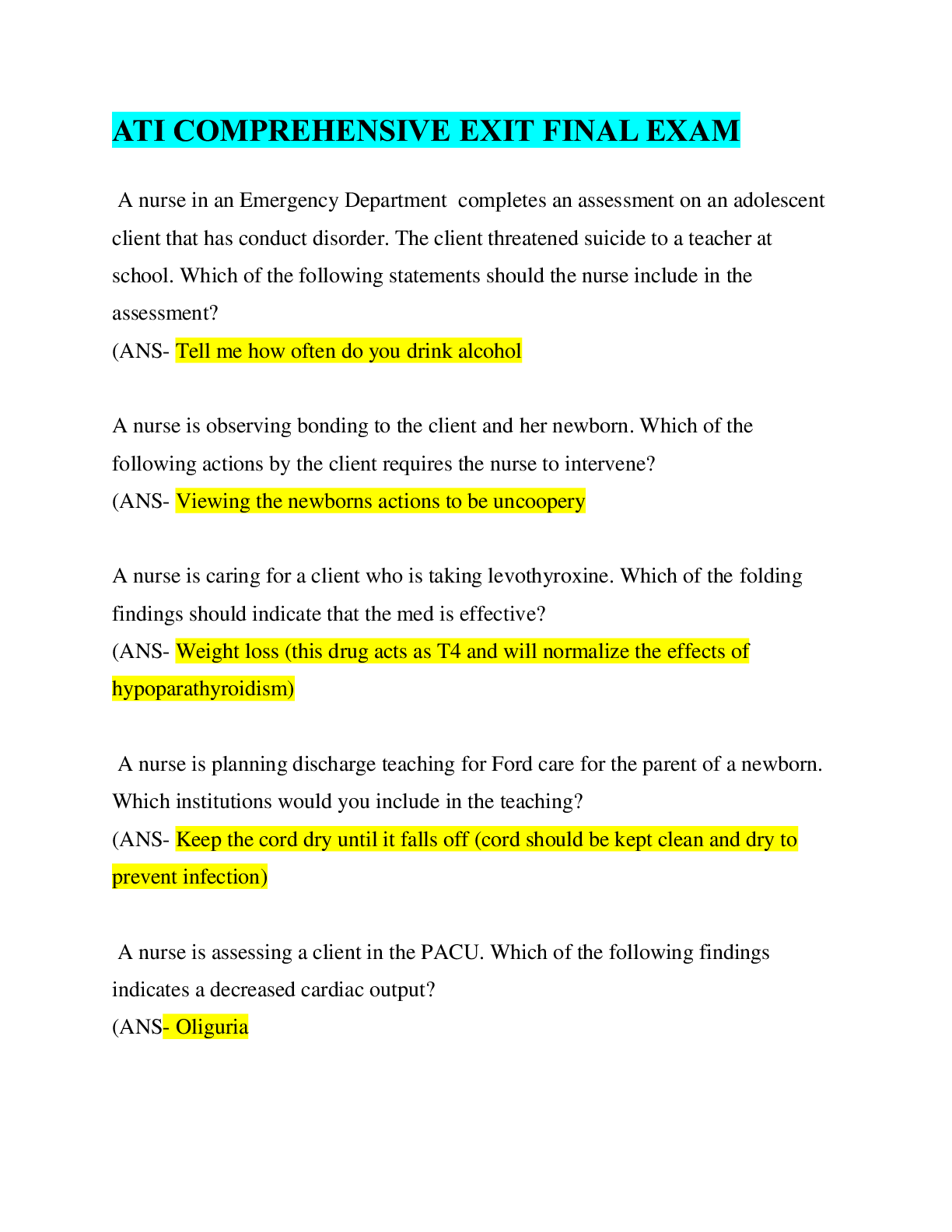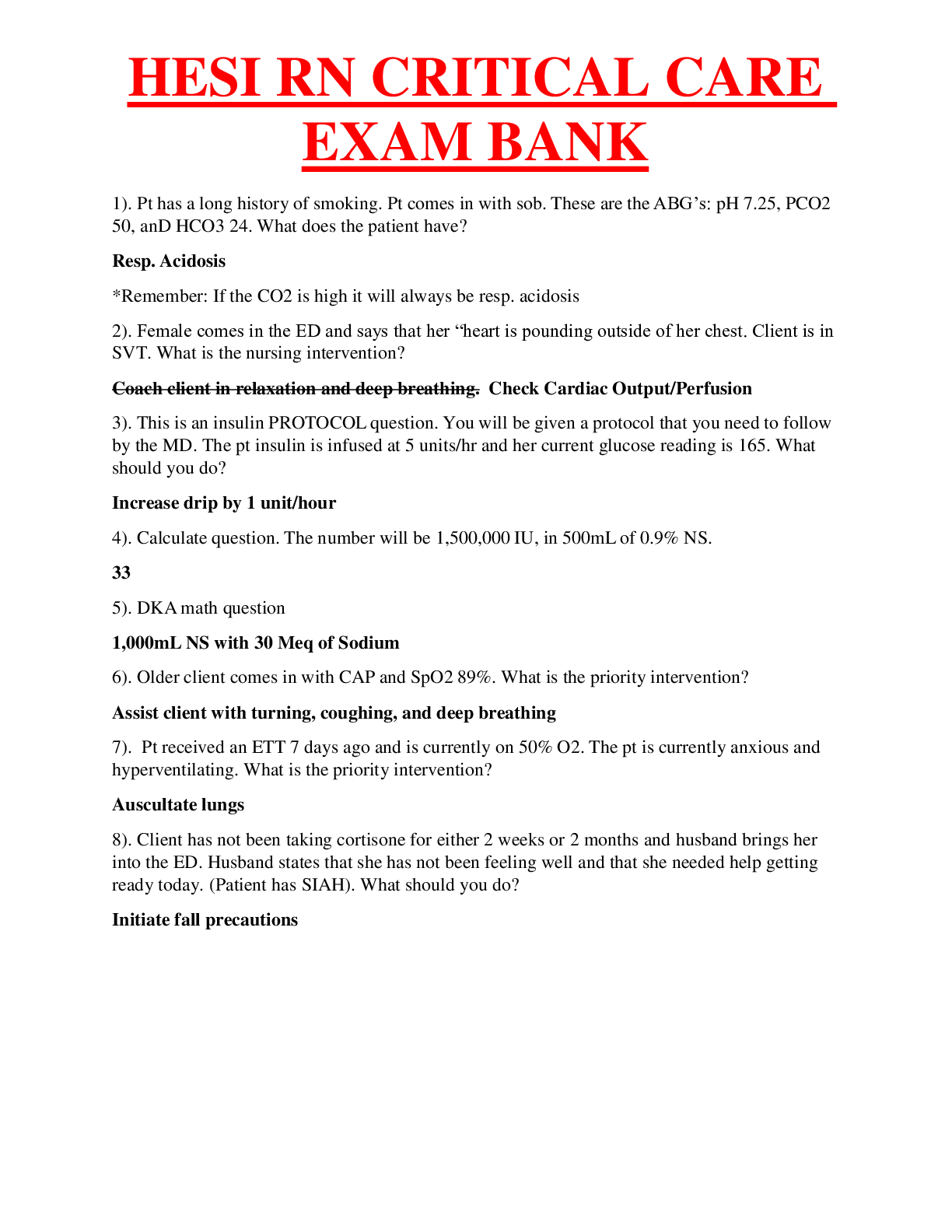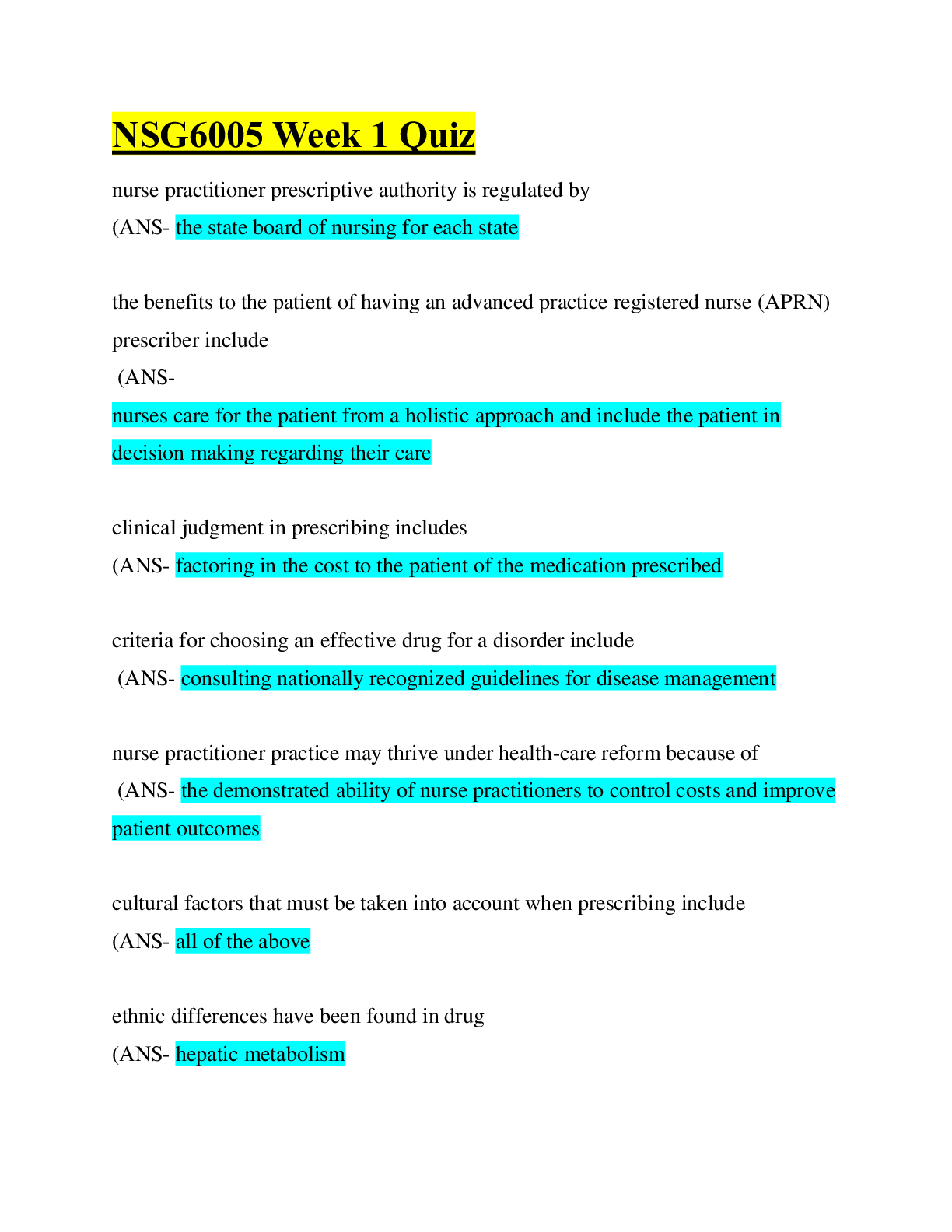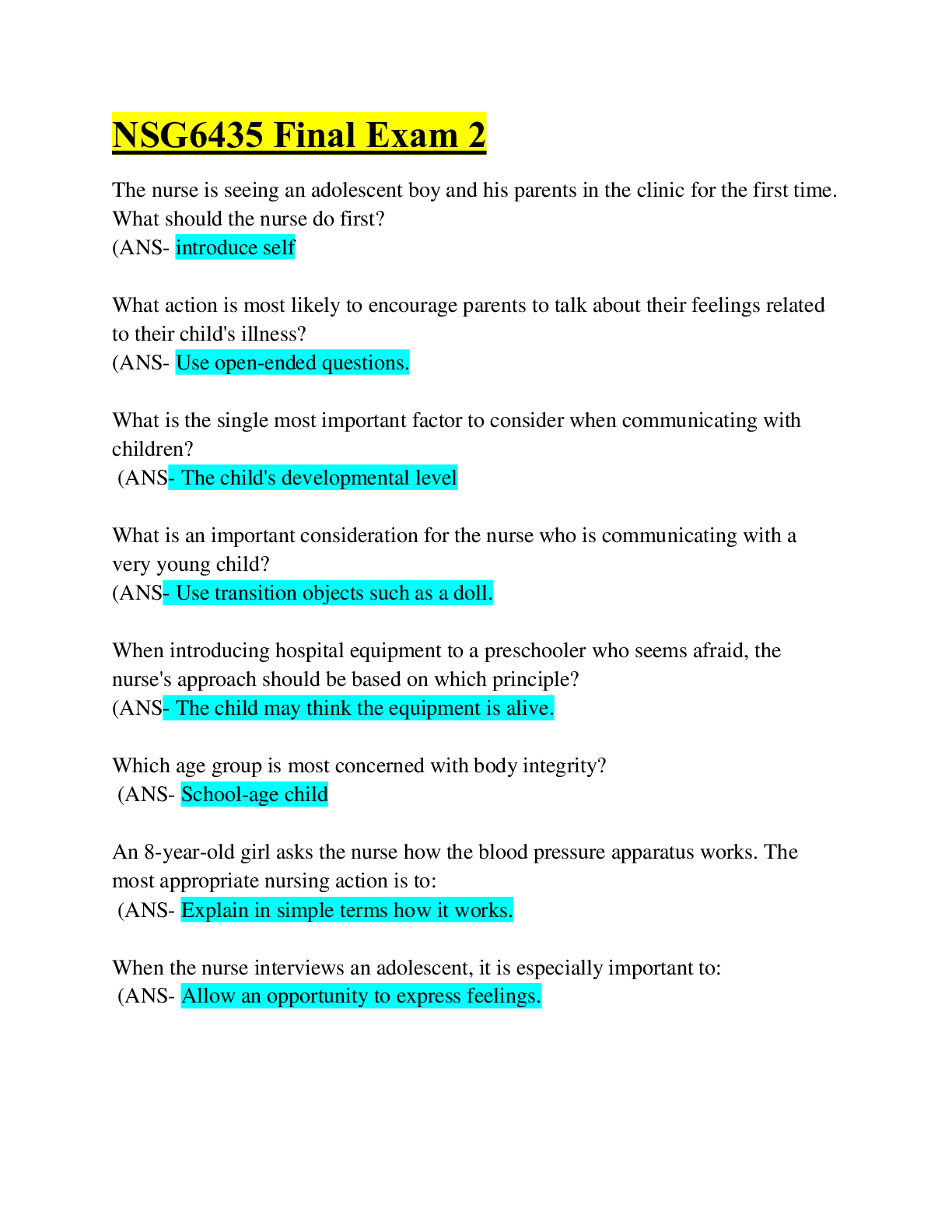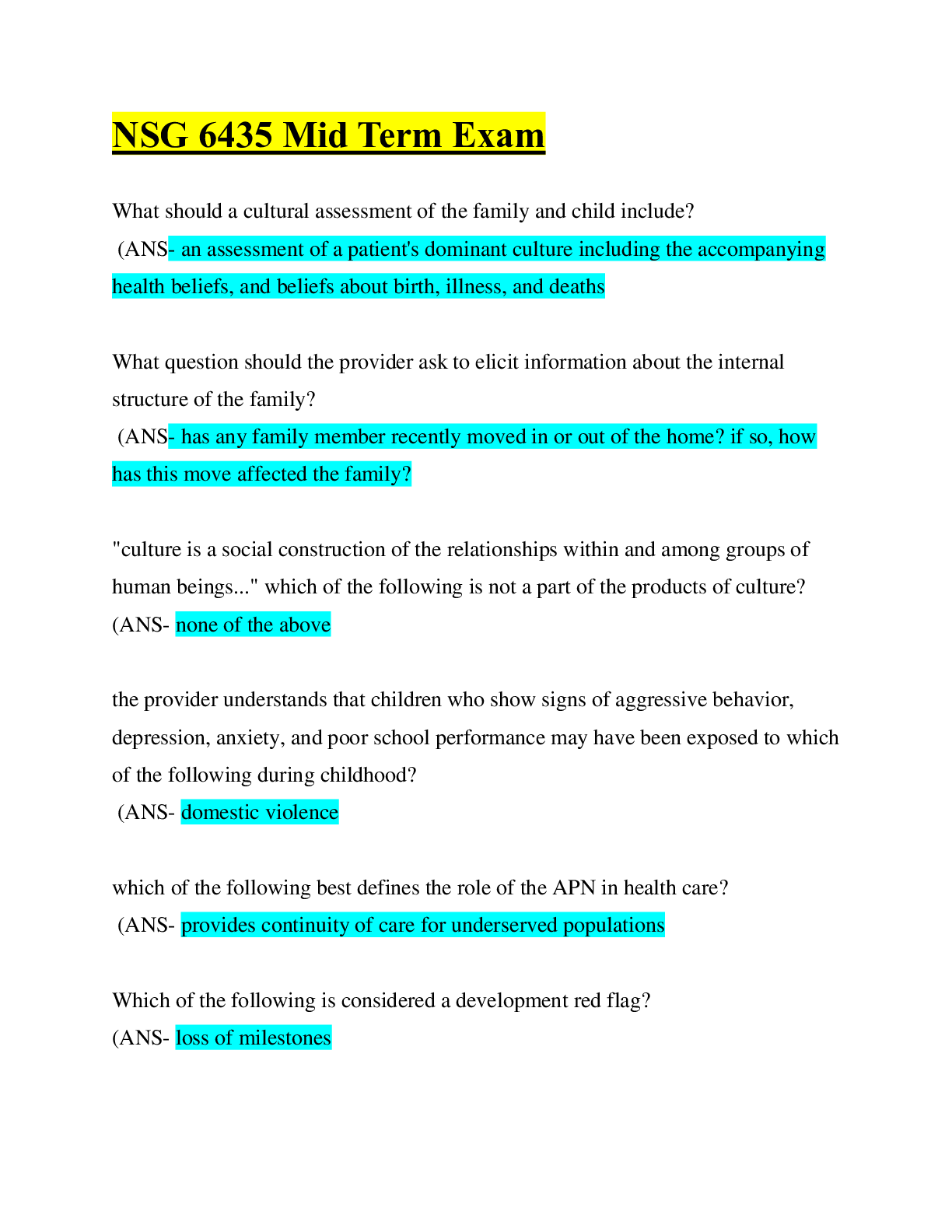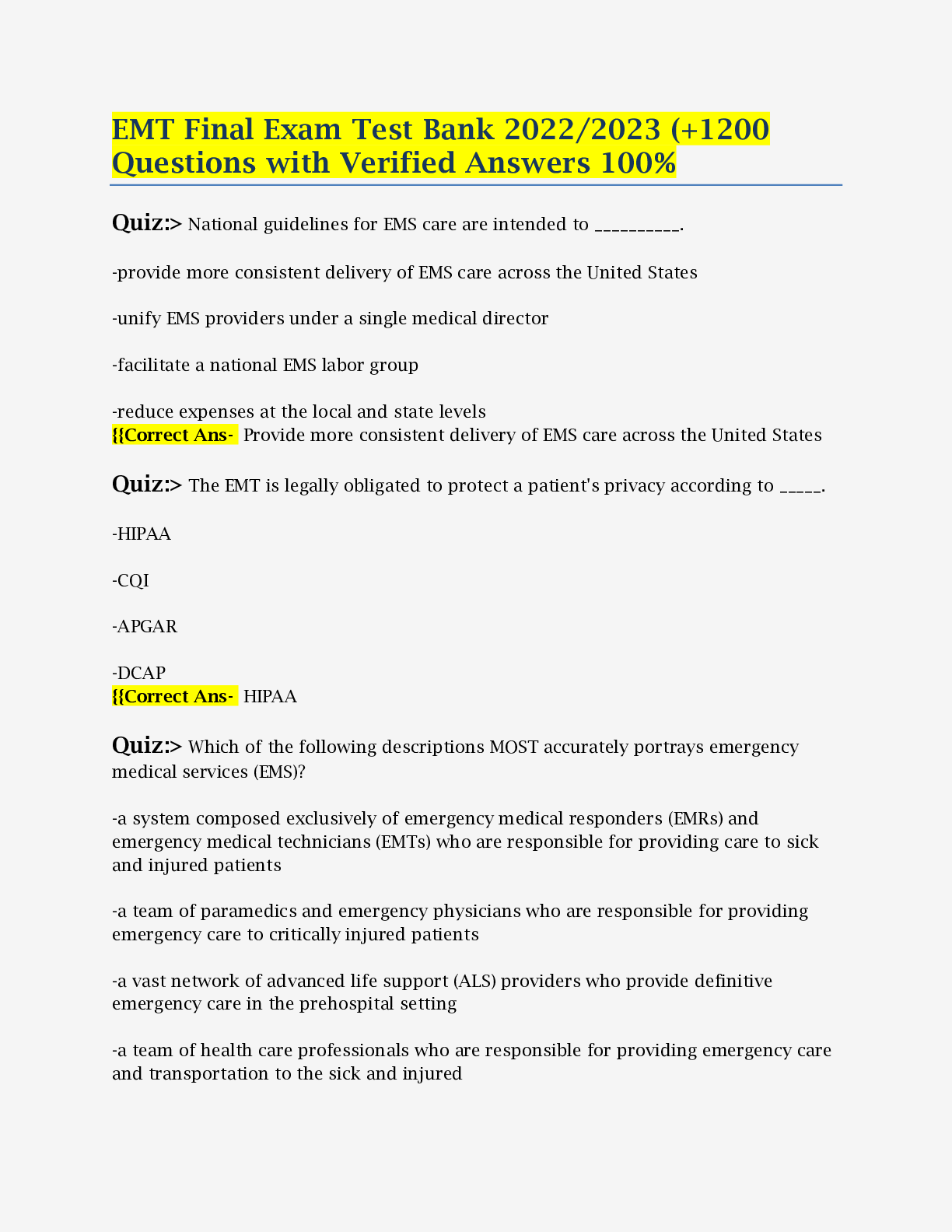Health Care > EXAM > HESI Comprehensive Exam B/ Questions & Answers/ Latest Complete Solution (All)
HESI Comprehensive Exam B/ Questions & Answers/ Latest Complete Solution
Document Content and Description Below
66. The nurse is caring for a client with a cerebrovascular accident (CVA) who is receiving enteral tube feedings. Which task performed by the UAP requires immediate intervention by the nurse? A.Suct... ions oral secretions from mouth B.Positions head of bed flat when changing sheets C.Takes temperature using the axillary method D.Keeps head of bed elevated at 30 degrees (ANS - B Rationale: Positioning the head of the bed flat when enteral feedings are in progress puts the client at risk for aspiration (B). The others are all acceptable tasks performed by the UAP (A, C, and D). 62. When caring for a postsurgical client who has undergone multiple blood transfusions, which serum laboratory finding is of most concern to the nurse? A.Sodium level, 137 mEq/L B.Potassium level, 5.5 mEq/L C.Blood urea nitrogen (BUN) level, 18 mg/dL D.Calcium level, 10 mEq/L (ANS - B Rationale: Multiple blood transfusions are a risk factor for hyperkalemia. A serum potassium level higher than 5.0 mEq/L indicates hyperkalemia (B). The others are normal findings (A, C, and D). 47. Which vaccination should the nurse administer to a newborn? A.Hepatitis B B.Human papilloma virus (HPV) C.Varicella D.Meningococcal vaccine (ANS - A Rationale: The hepatitis B vaccination should be given to all newborns before hospital discharge (A). HPV is not recommended until adolescence (B). Varicella immunization begins at 12 months (C). Meningococcal vaccine is administered beginning at 2 years (D). 31. The nurse is caring for a client on the medical unit. Which task can be delegated to unlicensed assistive personnel (UAP)? A. Assess the need to change a central line dressing. B. Obtain a finger stick blood glucose level. C. Answer a family member's questions about the client's plan of care. D. Teach the client side effects to report related to the current medication regimen. (ANS - B Rationale: Obtaining a fingerstick blood glucose level is a simple treatment and is an appropriate skill for UAP to perform (B). (A, C, and D) are skills that cannot be delegated to UAP. 20. The nurse is caring for a client with an ischemic stroke who has a prescription for tissue plasminogen activator (t-PA) IV. Which action(s) should the nurse expect to implement? (Select all that apply.) A .Administer aspirin with tissue plasminogen activator (t-PA). B. Complete the National Institute of Health Stroke Scale (NIHSS). C. Assess the client for signs of bleeding during and after the infusion. D. Start t-PA within 6 hours after the onset of stroke symptoms. E. Initiate multidisciplinary consult for potential rehabilitation. (ANS - B,C,E Rationale: Neurologic assessment, including the NIHSS, is indicated for the client receiving t-PA. This includes close monitoring for bleeding during and after the infusion; if bleeding or other signs of neurologic impairment occur, the infusion should be stopped (B, C, and E). Aspirin is contraindicated with t-PA because it increases the risk for bleeding (A). The administration of t-PA within 6 hours of symptoms is concurrent with a diagnosis of a myocardial infarction and within 4.5 hours of symptoms is concurrent for a stroke (D). 56. When caring for a client in labor, which finding is most important to report to the primary health care provider? A. Maternal heart rate, 90 beats/min. B .Fetal heart rate, 100 beats/min C .Maternal blood pressure, 140/86 mm Hg D. Maternal temperature, 100.0° F (ANS - B Rationale: A fetal heart rate (FHR) of 100 beats/min may indicate fetal distress (B) because the average FHR at term is 140 beats/min and the normal range is 110 to beats/min 160. The others (A, C, and D) are normal findings for a woman in labor. 61. The nurse is caring for a client with heart failure who develops respiratory distress and coughs up pink frothy sputum. Which action should the nurse take first? A. Draw arterial blood gases. B. Notify the primary health care provider. C .Position in a high Fowler's position with the legs down. D. Obtain a chest X-ray. (ANS - C Rationale: Positioning the patient in a high Fowler's position with dangling feet will decrease further venous return to the left ventricle (C). The other actions should be performed after the change in position (A, B, and D). 45. A client who is prescribed chlorpromazine HCl (Thorazine) for schizophrenia develops rigidity, a shuffling gait, and tremors. Which action by the nurse is most important? [Show More]
Last updated: 1 year ago
Preview 1 out of 43 pages
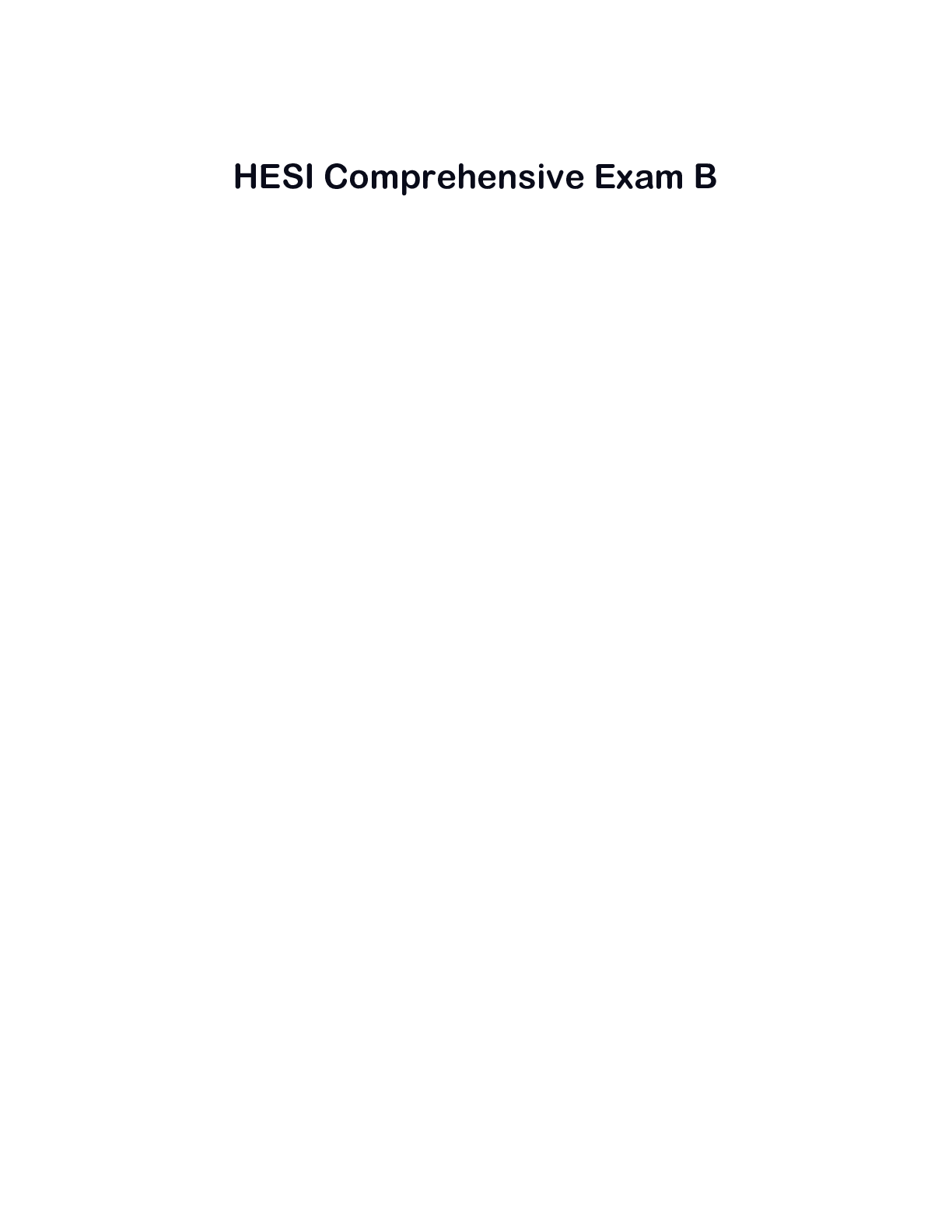
Buy this document to get the full access instantly
Instant Download Access after purchase
Add to cartInstant download
We Accept:

Reviews( 0 )
$11.50
Document information
Connected school, study & course
About the document
Uploaded On
May 25, 2022
Number of pages
43
Written in
Additional information
This document has been written for:
Uploaded
May 25, 2022
Downloads
0
Views
37

